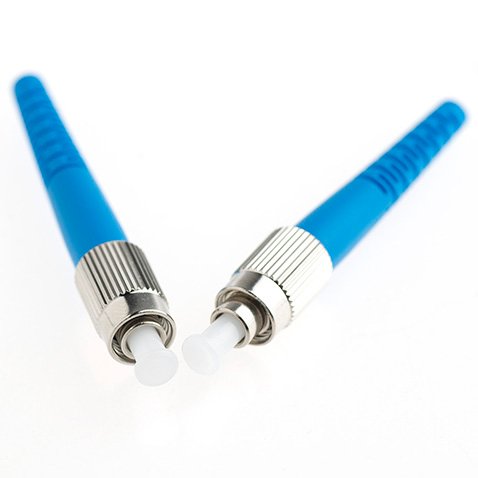SC APC / UPC / PC chinongedzo mhinduro yakanaka kune shamba wiring uye fiber-kune-imba yekubatanidza engineering. Gungano risina glue, zvigayo uye zvishandiso zvemagetsi, rinoshandiswa zvakanyanya muchikamu chekuvaka, iyo nzvimbo inoda kukurumidza kubatana, kuti ipe chinokurumidza uye chakagadzikana chinongedzo chekushanda. Iyo inotora ichangoburwa fiber yakagadzirwa tekinoroji. Yese yemaziso uye yemakanika indekisi inosangana neketuru tambo yakajairwa, kuwana kuti igadzire tambo kuburikidza neyemuchina inotonhora jena, inoshandura iyo tsika yechinyakare splice, inopa rutsigiro rune simba rweFTTx.
Color:
Optical fiber fast connector
The general structure of optical fiber connector
The main purpose of optical fiber connectors is to realize the connection of optical fibers. Nowadays, optical fiber connectors are widely used in optical fiber communication systems. There are many types and different structures. But looking closely, the basic structure of various types of optical fiber connectors is the same, that is, most of the optical fiber connectors are generally realized by high-precision components (composed of two pins and a coupling tube). Aligned connection of optical fiber.
This method is to insert and fix the optical fiber in the pin, polish the surface of the pin, and then realize the alignment in the coupling tube. The outer components of the pins are made of metal or non-metal materials. The butt end of the pin must be polished, and the other end usually uses a bend limiting member to support the optical fiber or optical fiber cable to relieve stress. Coupling pipes are generally made of two-half synthetic, fastened cylindrical members made of ceramic, bronze or other materials, and are often equipped with metal or plastic flanges to facilitate the installation and fixation of the connector. In order to align the optical fiber as accurately as possible, the processing accuracy of the pin and the coupling tube is very high.
Optical fiber connector performance
The performance of the optical fiber connector is the most important index. In addition, the interchangeability, repeatability, tensile strength, temperature, and the number of insertions and removal of the optical fiber connector must also be considered.
1. Optical performance: The requirements for the optical performance of optical fiber connectors are mainly the two most basic parameters of insertion loss and return loss.
Insertion Loss (Insertion Loss) is the connection loss, which refers to the loss of the effective optical power of the link caused by the introduction of the connector. The smaller the insertion loss, the better, and the general requirement should be no more than 0.5dB.
Return Loss (Reflection Loss) refers to the ability of the connector to suppress the reflection of the optical power of the link, and its typical value should not be less than 25dB. In the actual connector, the pin surface has been specially polished, which can make the return loss greater, generally not less than 45dB.
2, interchangeability, repeatability
Fiber optic connectors are universal passive components. Generally, the same type of fiber optic connectors can be used in any combination and can be used repeatedly. The additional loss introduced by this is generally within the range of less than 0.2dB.
3, tensile strength
For a finished fiber optic connector, it is generally required that its tensile strength should not be less than 90N.
4, temperature
Generally, the optical fiber connector must be able to be used normally under the temperature of -40℃ ~ +70℃.
5, the number of plugs
The fiber optic connectors currently in use can generally be plugged and unplugged more than 1,000 times.
Some common optical fiber connectors
According to different classification methods, optical fiber connectors can be divided into different types. According to different transmission media, they can be divided into single-mode fiber connectors and multimode fiber connectors; according to different structures, they can be divided into FC, SC, ST, D4, DIN, Biconic, MU, LC, MT, and other types; according to the pin end face of the connector, it can be divided into FC, PC (UPC) and APC; according to the number of fiber cores, there are also single-core and multi-core points.
In the actual application process, we generally distinguish according to the structure of the optical fiber connector. The following briefly introduces some of the more common optical fiber connectors:
SC optical fiber fast connector SC straight-through fast connector 3M optical fiber cold splice SC embedded fast connector SC optical fiber connector 3M optical cable cold splice ST optical fiber fast connector ST embedded fast connector 3M butt cold splice ST Straight-through fast connector SC optical fiber fast connector 3M cold splice SC straight-through fast connector SC embedded fast connector optical fiber cold splice SC optical fiber connector ST optical fiber fast connector butt cold splice ST embedded fast connect ST straight-through fast connector optical fiber cold splice ST optical fiber connector FC optical fiber fast connector optical cable cold splice FC optical fiber connector FC fast connector 3M optical fiber cold splice FC optical fiber connector
Product name fast connector Product model
Product specifications SC FC ST LC type performance index IEC61754-4, ROHS
index parameter
Product Type Single-mode Multi-mode
Insertion loss ≤0.5dB ≤0.3dB
Return loss ≤-50dB (PC) ≤-60dB (APC) ≤-25dB
Mechanical durability 0.25 Db MAX. 0.15 Db MAX.
Connecting time NOM.≤90S
Suitable for optical cable outer diameter 0.9mm, 2.0mm, 3.0mm, 2*3.0mm
Working temperature -40~+85℃
Storage temperature -40~+85℃
Tsanangudzo yechigadzirwa
·High cost-effective on-site optical fiber fast connection products developed to ensure installation quality and installation efficiency;
·The crimping part adopts a new and unique structure design, no glue injection, grinding, and consumables are required during installation;
·Adopt pre-embedded optical fiber structure;
·It has the characteristics of high installation quality, high success rate, and fast installation;
·Reusable, easy to operate on-site;
·Easy to carry;
·Performance description
·Accurate mechanical size
·Low insertion loss
·High return loss
·Comply with IEC61754-4
·All materials meet ROHS
Application field
·Used to open FTTH optical fiber terminal to end
·Connecting boxes, cabinets, end boxes, etc.
·Recovery and maintenance in the event of fiber breakage and other accidents
·LAN, WAN, data and video transmission
·Construction and maintenance of optical fiber access for end-users
·Fiber access for mobile base stations









